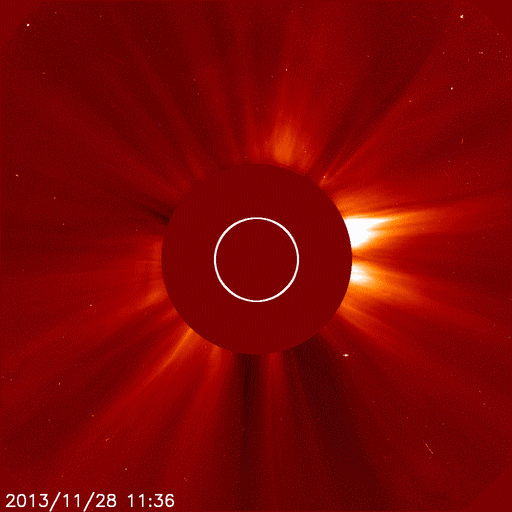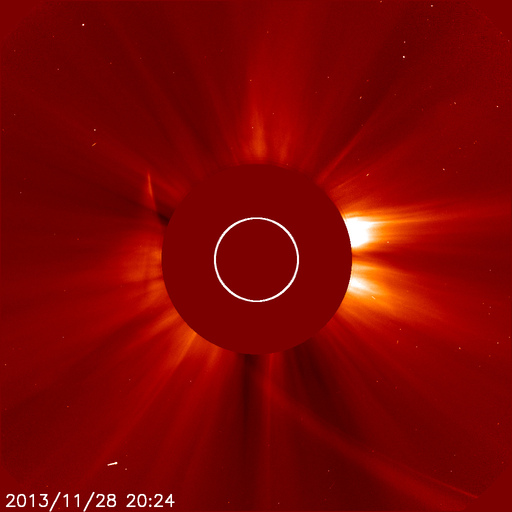Comet ISON's perihelion mystery
Apparently it's a tradition for some to watch the Thanksgiving football game. I'm not much for sports so I'll just have to take other people's word on that. I however was watching the ISON's perihelion pass via SOHO, SDO, STEREO, and the NASA Google+ hangout for the event. Mostly from my iPhone as we were at the in-laws with no WiFi for the laptop. First of all I'm still slightly amazed that I managed to watch a comet pass the Sun in nearly real time on a mobile phone. Hooray 2013! Well, more like hooray 2010 given the age of my phone but I digress.
Given what I was seeing from SOHO's LASCO C2 camera I though ISON was a goner, it seemed that most everyone else was in agreement with this too. Below is an animated GIF of SOHO images showing what appears to be the comet's nucleus disintegrating. Notice how it goes form sharp, bright, well defined object to what I called a "smeared out mess" at the time.

Indeed SDO never caught sight of ISON as predicted and what showed up on LASCO C2 in ISON's predicted path looked to just to be remnants of the nucleus that had been strewn about.

At this time most of the official NASA channels were calling it dead. It certainly looked that was the case to me as well. A bit disappointing but it would still provide a good bit of data to look at. ISON is a bit unique in that it's an Oort Cloud object and a sun grazer, so whatever we could get from its demise could provide some information on the components of the early solar system. It was expected that the debris would float around in the solar atmosphere for a while and give the fleet of spacecraft watching the Sun time to gather some data on the comet's composition, etc.
However a few hours later whatever was left of ISON started getting brighter and showing up nicely on SOHO's LASCO C3 camera. C2 is a tighter view and C3 is its wide field brother.

So what's going on here? I honestly don't know. Most of the people I follow and communicate with in the astronomy community are confounded too. It looks like we either have a chunk of nucleus that survived or a perhaps a "headless comet." That is a comet without a defined coma or nucleus, just a jumble of material. The best thing to do at this point is continue monitoring the comet and see what happens. We may yet have it adorn our winter skies here in the northern hemisphere but I wouldn't put much money on it.
The exciting thing here is that we have a wealth of images and data to go over. It seems we might not know as much about these Oort Cloud objects as we thought. Even if ISON has evaporated or disintegrated it will be useful to planetary scientists studying these things.